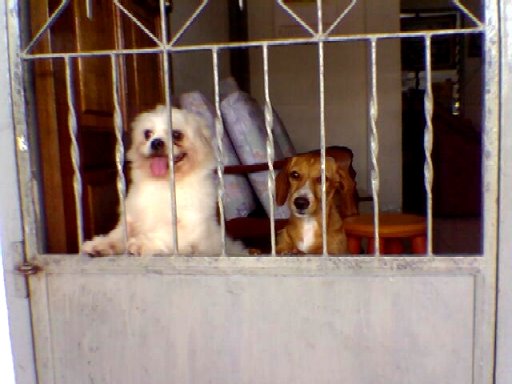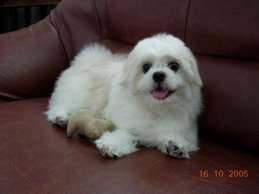A Dogs Ancestry
To understand the fundamentals of a dog's
behaviour we must first look into its evolution
and its background.
Today's dogs, however different they look and
however different their temperaments are all
decedents of the wolf. It is still in debate as
to when and where this partnership between man
and dog first evolved. Remains have been located
in the middle east, Belgium and Russia dating
back 12,000 to 31,000 years ago. It is believed
wolves began scavenging near early settlements
and adult wolves may have been killed for meat
and fur with pups being raised by the humans.
The wolves realised that hunting for food was
not the only option and over time a trust
developed between the two species.
The partnership evolved over many hundreds of
years. The wolves gained a reliable food source,
whilst the humans sought protection,
companionship and hunting partners. As
agriculture took hold, the relatives of these
wolves were used for various tasks, mainly
herding and guarding. This was the start of the
breeds we see today.
So how does a dog's heritage still play a part
in its behaviour today? Although dogs have
evolved into a home dwelling animal far removed
from a wolf's environment, it does not detract
from its fundamental instinct of survival. Dogs,
as wolves, thrive as a functioning member of a
community or pack. This is their primary
instinct as they believe this is vital to their
survival. Food and reproduction also dominate
their survival instinct. Without food or
securing the future of their 'pack' their
survival rate is diminished. They believe in
hierarchy and benefit from a solid and
consistent working group.
Your dog sees the family as its 'pack' and
behavioural problems usually arise when they are
put into a position where they feel you are not
able to lead effectively. This normally occurs
due to inconsistent communication and although
unequipped for this world they find themselves a
part of, they are forced to protect and take
charge.
The biggest mistake we make is
anthropomorphising our pet dogs, assuming they
understand our world. To understand them better
we must take our human cap off and put our
doggie cap on in order to view the world through
the dog's eyes. We assume that because our dog
sits when we ask it to or gets excited when we
pick up its lead that it understands our verbal
and body language. Our speech is however
misunderstood; instead dogs mentally associate
noises and actions to a reaction, either good or
bad. We call this a conditioned response. Using
tones when communicating is a valuable way of
reinforcing good or bad behaviour. You could say
the same word in two ways and you would get a
completely different reaction from your dog.
There are many conflicting ideas and theories
about how much of our domesticated dogs
character resembles that of their ancestor, the
wolf. The canine as we know and love is indeed
domesticated and able to survive in our human
society but it does not detract from the fact
that they reportedly share about 99% dna
similarities, which is similar to our DNA
similarity to chimpanzees. Understanding where a
dog has developed from and how it primary
instincts lend to its behaviour is the most
beneficial way of learning to communicate with
your dog.
----------------------------------------------------
Richard Johnson - specialising in non harsh,
affordable solutions for problem dog behaviour
in Manchester. http://www.dogtech.co.uk
EasyPublish this article: http://submityourarticle.com/articles/easypublish.php?art_id=261758














.jpg)






.jpg)

0 comments:
Post a Comment